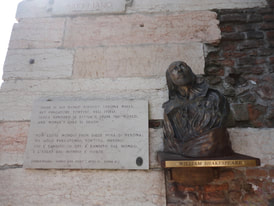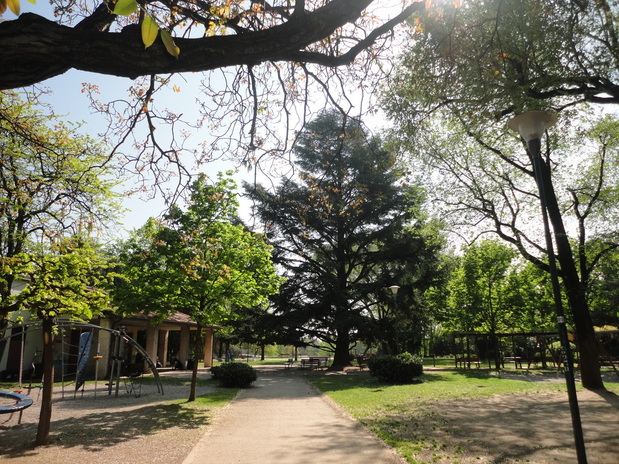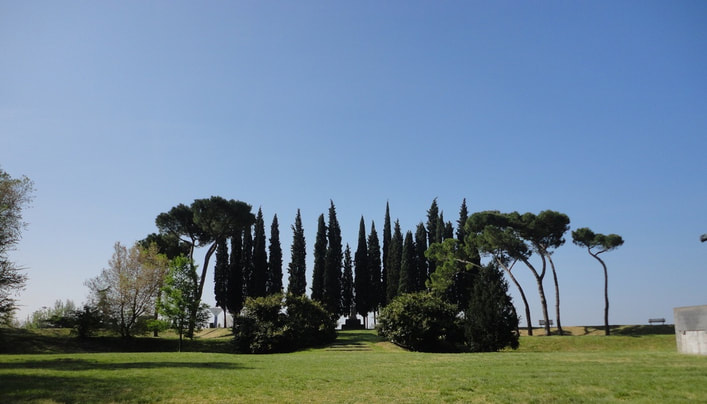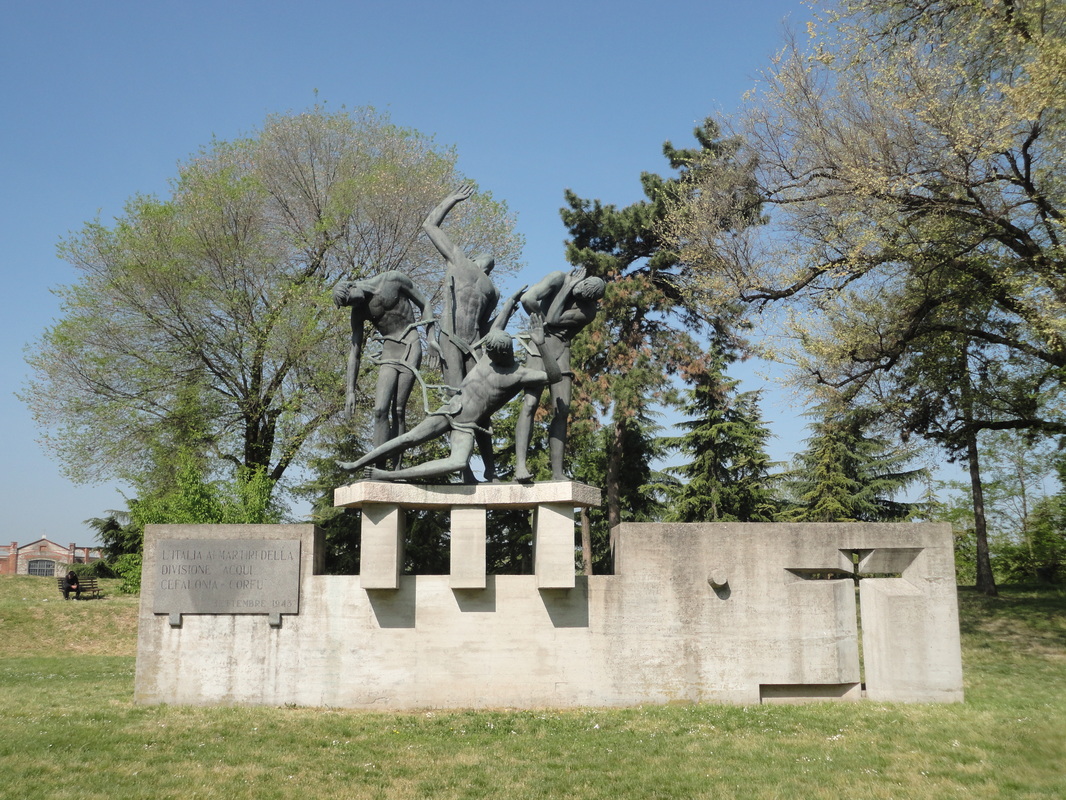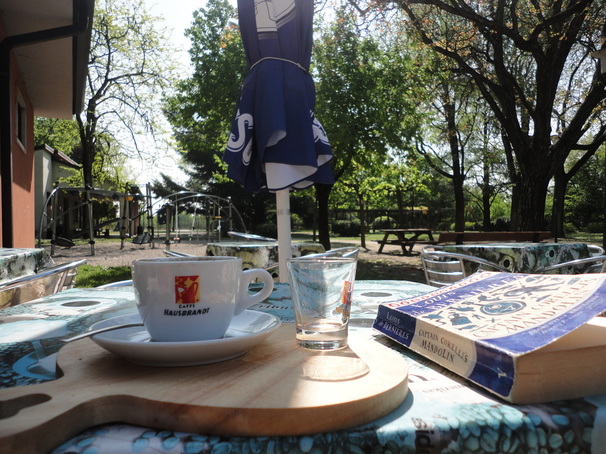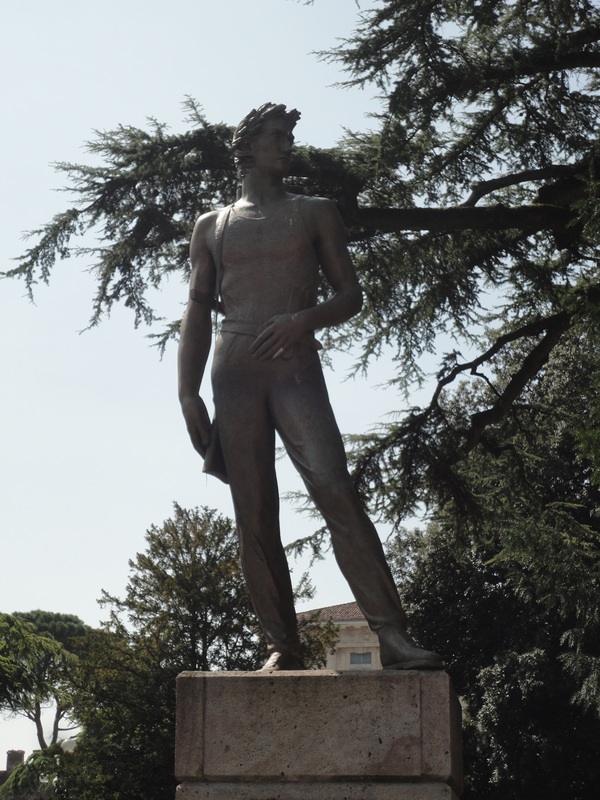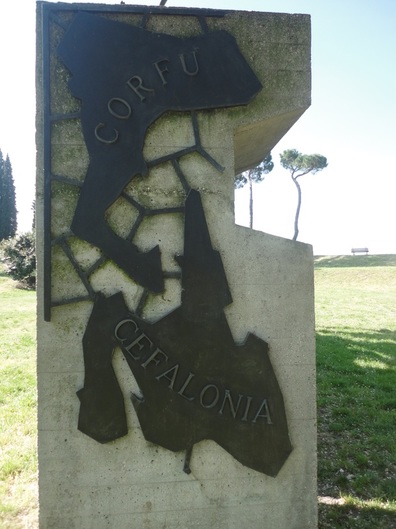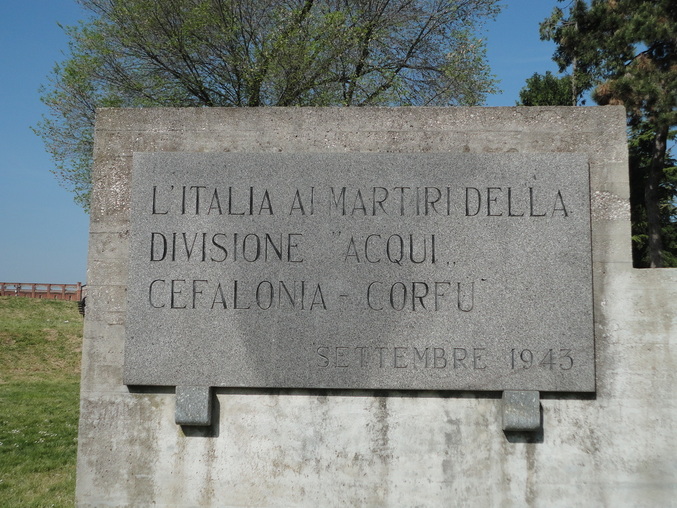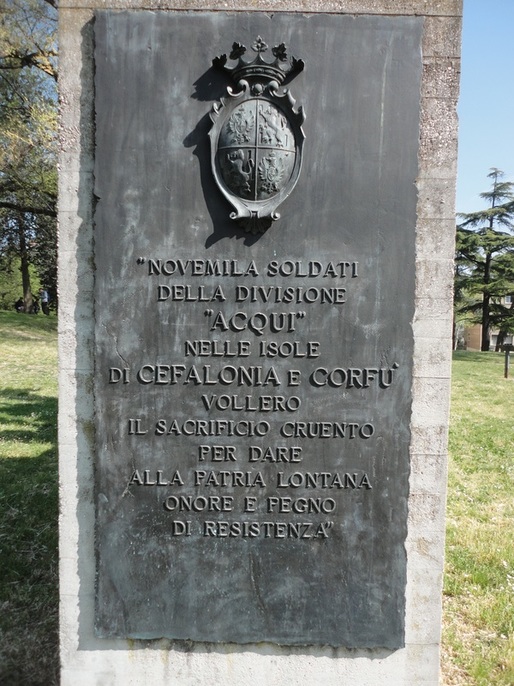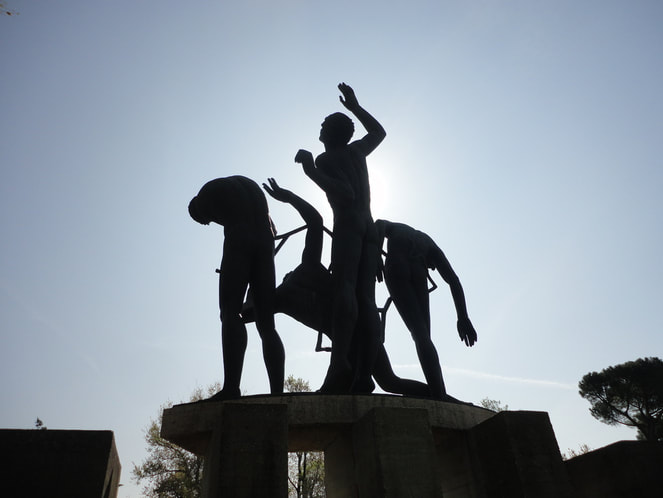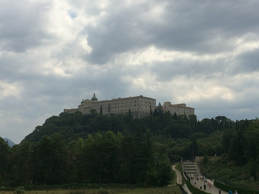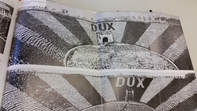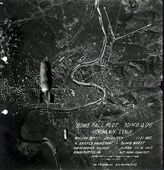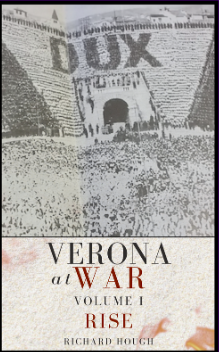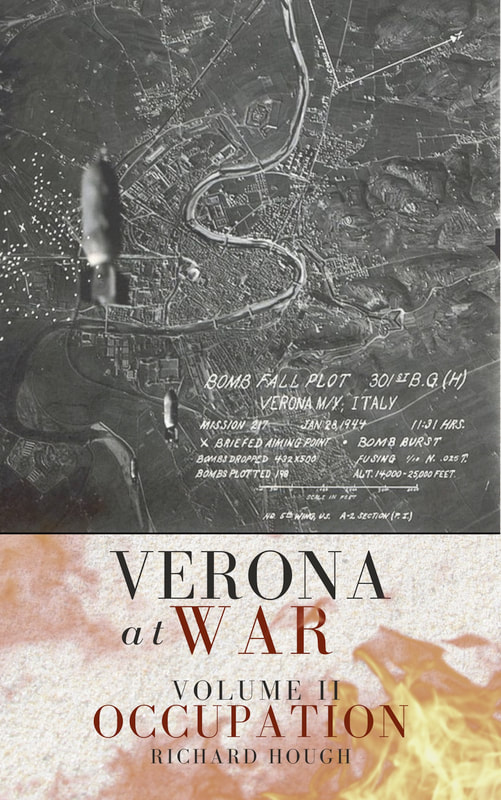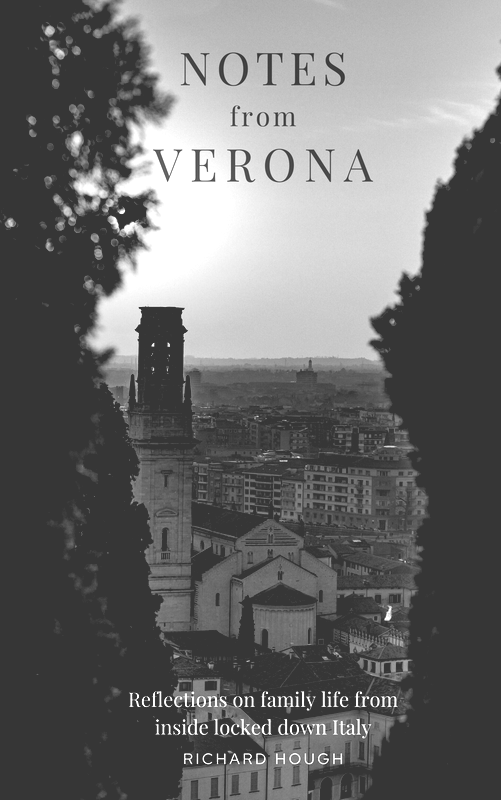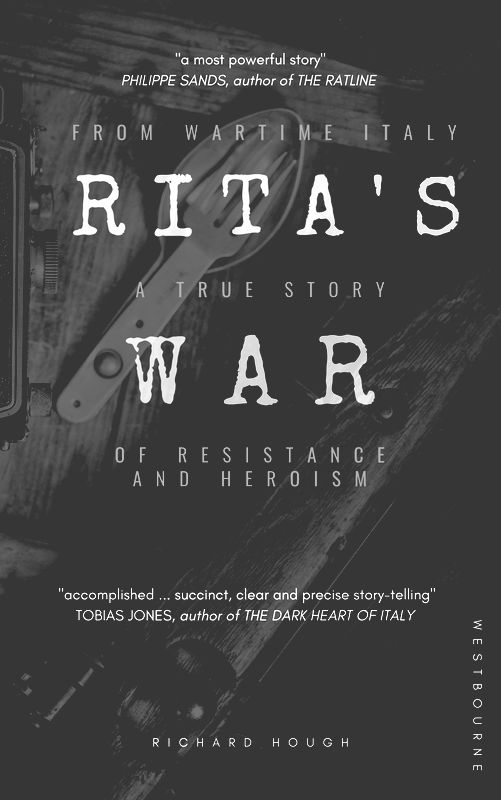|
There is no world without Verona walls,
But purgatory, torture, hell itself. Hence-banished is banish'd from the world, And world's exile is death. Romeo and Juliet, Act 3, Scene 3
Verona's walls
Those ancient walls of which Shakespeare spoke still guard some of Verona’s best-kept treasures. Amongst the gems it conceals, Parco Raggio di Sole, a green oasis of trees and play parks discreetly located high on the wall's ramparts. So discreet, in fact, that it has taken me nearly 4 years to discover, and then only quite by chance.
While the city’s suburban parks are often mysteriously devoid of children, at the Raggio di Sole there is no shortage of keen youngster, eager to join in an impromptu game of football. With a bar, pizzeria, animal enclosure and roller-skating rink, it’s the perfect place to come on a bright sunny spring morning. The steady rumble of traffic from the nearby ring-road, the only reminder that you are still in the heart of the city.
Not far from the park, another of the wall’s hidden treasures lies waiting to be discovered.
The Parco Divisione Acqui commemorates the terrible events that took place in Cephalonia in September 1943.
Those who have read Captain Correlli’s Mandolin (a literary masterpiece) or seen the film (a Hollywood travesty) will have some understanding of the tragic events that this magnificent monument commemorates. It is one of Verona’s most striking public works of art, a masterpiece of modern sculpture, let down only by the rather ugly concrete plinth upon which it stands and the badly translated information plaque nearby.
The sculpture was created by the renowned artist, poet and partisan Mario Salazzari. He was tortured and imprisoned by the Nazis, but esacaped a few days before the arrival of the Allied army. Visitors to Verona will be more familiar with Salazzari’s other great work, the Monumento al Partigiano, which gazes heroically over Piazza Bra.
The invasion of Greece
On 28 October 1940 the Italian dictator, “in his customary cold blooded way” and “without the slightest provocation”, launched an attack on the “small but famous and immortal Greek nation” [Churchill's words]. The Greeks repelled the initial attack and the counter-attack that followed in March 1941. But in April, the faltering Italian invasion was bolstered by the arrival of the Germans. The Greek army was unable to defend itself against this combined Italian and German onslaught and on 27 April 1940 Athens fell.
The fascist occupation
Military forces from Germany, Italy and Bulgaria divided and occupied Greece. The Italian Acqui Division (11,500 soldiers and 525 officers commanded by 52-year-old General Antonio Gandin, an Iron Cross clad veteran of the Russian Front) was given the task of occupying the island of Cephalonia. There followed a period of fascist occupation during which the civilian population suffered terrible hardship, with many dying from privation and hunger. The brutal occupation provides the historical backdrop to the story of Captain Correlli's Mandolin. Italian surrender In September 1943, when Italy surrendered to the Allies, General Gandin faced a serious dilemma: to surrender to the Germans or resist? In the absence of specific orders from his superiors, he began negotiations with his German counterpart, Colonel Johannes Barge. The two men respected each other and concluded their discussions hopeful that the desperate situation could be resolved peacefully. However, things soon deteriorated and on 11 September 1943, Barge gave Gandin three choices: (a) continue fighting on the German side; (b) fight against the Germans; or (c) surrender their arms peacefully. On 13 September, in an unlikely display of democratic decision-making, Gandin presented his troops with a poll: (i) join the Germans; (ii) surrender and be repatriated; (3) resist the Germans The Italian troops favoured the third option and Gandin subsequently demanded that the Germans leave the island.
The massacre of Cefalonia
As the negotiations stalled, the Germans prepared to resolve the issue by force. Wehrmacht General Hubert Lanz was responsible for removing the Italian forces from the Greek islands. On the morning of 15 September, the Luftwaffe began bombarding the Italian positions. Despite some help from the local population, the conscripts of the Acqui Division were no match for the battle-hardened German troops. After several days of combat, out of ammunition and with mounting casualties, the last Italians surrendered. German orders were to take no prisoners. The Italians were machine gunned where they stood. The massacre continued for a week. In Corfu, resistance lasted only for a day, but all 280 Italian officers on the island were shot, their bodies, on Lanz's orders, disposed of in the sea. Padre Romualdo Formato, one of Acqui's seven chaplains and one of the few survivors of the massacre, could only watch on as captured Italian officers cried, prayed and sang. At the moment of execution, many called out for their mothers, wives and children. Alfred Richter, an Austrian, and one of the participants in the massacre, later remembered how an Italian soldier who sang arias for the Germans in the local taverns was forced to sing while his comrades were being executed. In all, 5,000 Italian soldiers were massacred. Three thousand survivors subsequently perished at sea as they were being shipped to German concentration camps. The Acqui Division was wiped out.
Padre Formato survived the massacre and died in 1961. According to his nephew, he never recovered from the events he witnessed on Cefalonia.
General Lanz, commander of the XXII Mountain Corps, is the only person to have been punished for the massacre of Cefalonia. At the Nuremberg Trials he was sentenced to 12 years imprisonment. He was released in 1951 and died in 1982. Lt. Colonel Barge was not on the island when the massacre took place. He was subsequently decorated with the Knight's Cross of the Iron Cross for his service in Crete. He died in 2000.
Today, Verona is the seat of the national headquarters of the Acqui Division, which represents the survivors of the massacre of Cephalonia and Corfu. In a solemn ceremony held every year on the anniversary of the massacre, veterans gather around the monument on Verona's famous walls and remember their fallen comrades.
More articles like this...
|
AboutRichard Hough writes about history, football, wine, whisky, culture + travel and is currently working on a trilogy about wartime Verona.
|
